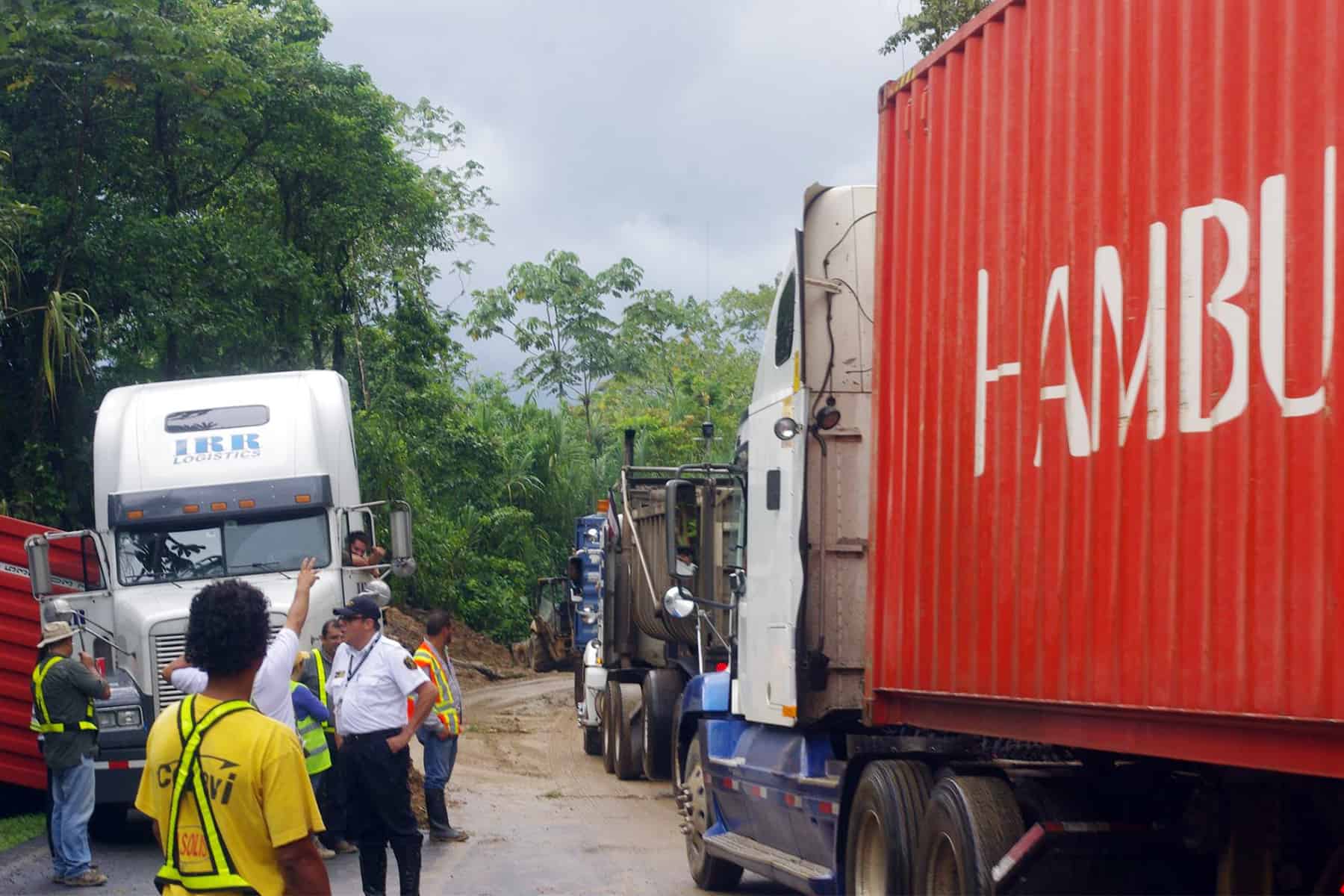Drivers on Route 32 faced another disruption today when fallen debris forced a temporary shutdown in the Zurquí area. The Ministry of Public Works and Transportation (MOPT) closed the road around 5 a.m. for safety reasons while crews cleared the material. By 10 a.m., traffic resumed, but heavy backups lingered from the early morning rush.
MOPT officials noted that constant monitoring remains in place. “After removing the fallen debris, Route 32 was reopened, and we continue to watch the area closely,” the ministry stated. They urged patience, explaining that even after reopening, queued vehicles would take time to move. “Those in line won’t start right away. Stay patient,” they added.
This five-hour halt follows a major 12-day closure earlier this month. Heavy rains on November 3 triggered landslides near kilometer 31 in Zurquí, blocking the key link between the Central Valley and Limón. The shutdown stranded thousands and slowed access to the Caribbean coast. Crews dynamited a 2,500-ton rock and removed unstable material before reopening on November 15. Yet, just days later, on November 16, favorable weather allowed overnight passage, lifting a planned 6 p.m. restriction.
Route 32 has closed 24 times this year due to debris or preventive measures, mostly at night. Water erosion in the mountainous stretch poses the main risk, leading to frequent slides during the rainy season. The road serves as a vital artery for trade, tourism, and daily commutes, connecting San José to ports and beaches in Limón. Prolonged closures have hit the local economy hard, delaying shipments and stranding travelers. Alternate routes, like those through Turrialba, have seen massive traffic jams, with trips to Limón stretching over four hours.
Businesses along the Caribbean coast report losses from reduced visitors and slowed goods transport. The chamber of commerce in Limón has highlighted how these interruptions affect agricultural exports and supply chains.
Looking ahead, uncertainty persists with potential for more collapses under adverse weather. MOPT stresses that rain remains the biggest threat to stability.
Efforts to address these problems are underway. Deputy Minister of Infrastructure Pablo Camacho explained that teams conduct studies from the toll booth to the Sucio River bridge to find lasting fixes. “For the first time since the highway’s construction, we examine hydraulic and hydrological factors, which drive the landslides,” he said.
In October, MOPT announced a $30 million investment for slope stabilization. Studies wrap up in December, with work set to begin next year. Meanwhile, the road’s expansion project nears completion, with delivery slated for December 28. The upgrade aims to boost capacity and safety on this critical route.
For now, authorities advise drivers to check social media for real-time updates on conditions and possible closures. With the rainy season ongoing, travelers should plan extra time and consider alternatives when needed.






